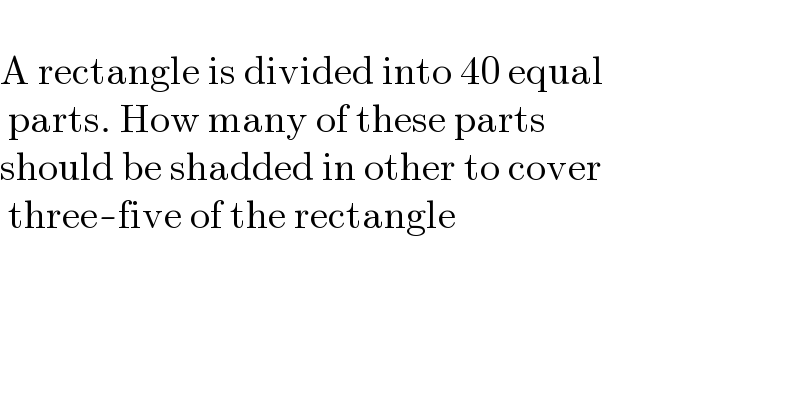Question Number 171362 by otchereabdullai@gmail.com last updated on 13/Jun/22

$$ \\ $$$$\mathrm{A}\:\mathrm{rectangle}\:\mathrm{is}\:\mathrm{divided}\:\mathrm{into}\:\mathrm{40}\:\mathrm{equal}\: \\ $$$$\:\mathrm{parts}.\:\mathrm{How}\:\mathrm{many}\:\mathrm{of}\:\mathrm{these}\:\mathrm{parts}\: \\ $$$$\mathrm{should}\:\mathrm{be}\:\mathrm{shadded}\:\mathrm{in}\:\mathrm{other}\:\mathrm{to}\:\mathrm{cover}\: \\ $$$$\:\mathrm{three}-\mathrm{five}\:\mathrm{of}\:\mathrm{the}\:\mathrm{rectangle} \\ $$$$\: \\ $$
Answered by Rasheed.Sindhi last updated on 13/Jun/22

$$\frac{\mathrm{3}}{\mathrm{5}}\:\mathrm{of}\:\mathrm{40}=\frac{\mathrm{3}}{\mathrm{5}}×\mathrm{40}=\mathrm{24}\:\mathrm{parts} \\ $$$$\mathrm{24}\:\mathrm{parts}\:\mathrm{should}\:\mathrm{be}\:\mathrm{shaded}. \\ $$
